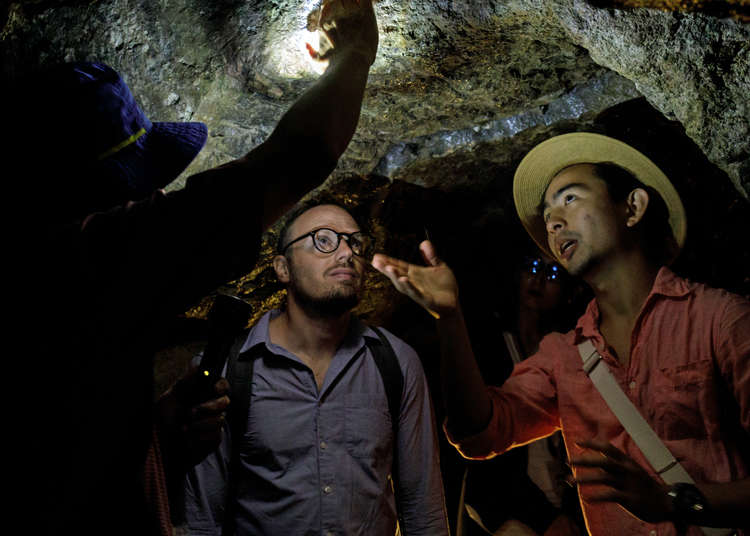
Iwami Ginzan Silver Mine and its Cultural Landscape was designated a UNESCO World Heritage site in 2007. Visitors here can get insight into the area's fascinating history through guided tours (including a trip on the Ginzan-Kodo course to one of the tunnels into the silver mine.) Reserve a spot on a tour with a friendly and knowledgeable guide for a more in-depth travel experience in Shimane.
Engaging and educational guided tours of the Iwami Ginzan area
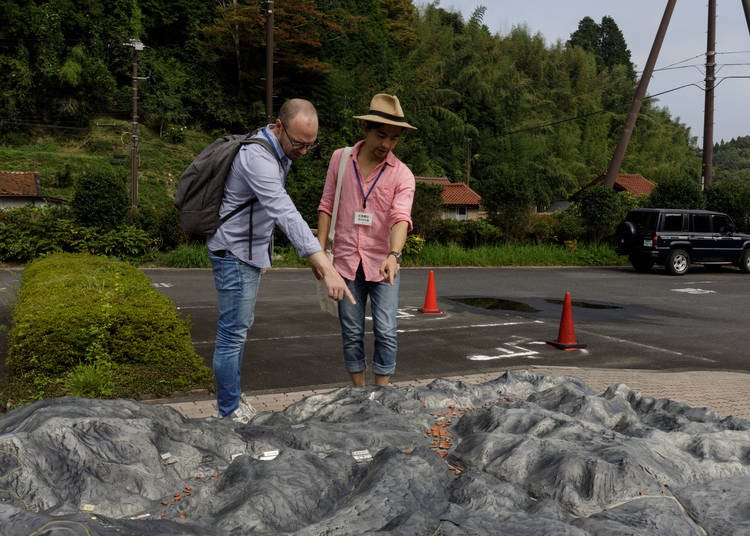
Before we begin our guided tour of Iwami Ginzan Silver Mine on the Ginzan-Kodo course, our guide tells us that you can't fully appreciate Omori Town and the mine without knowing the background. Around two and a half hours later, after we'd completed the course, we had a new-found appreciation for the area and its importance in Japanese history.
Today, there might only be 400 residents in Omori Town - although this number is steadily growing thanks to successful local-community re-energization - there was a time when thousands of people lived here. Extreme population changes are not the only way the area has transformed over the centuries.
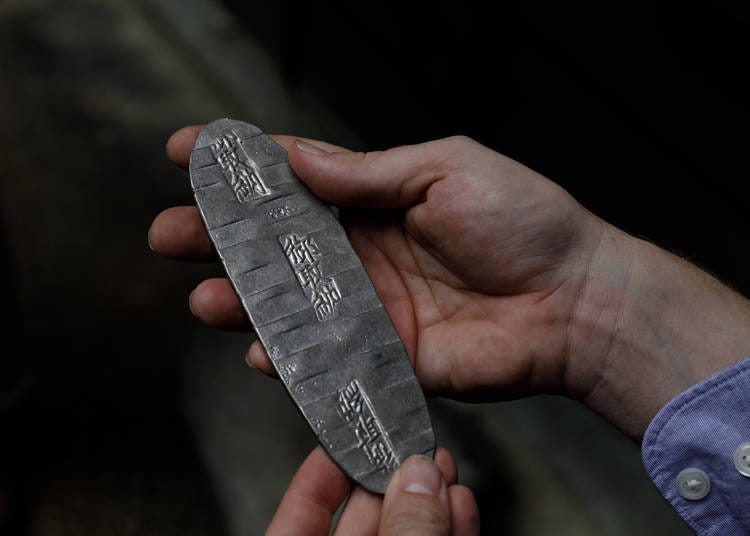
The scenery has altered wildly, too. However, unlike the general trend for sacrificing the natural environment for the human-made, the reverse is true here. Nature has reclaimed what was hers: Greenery has covered the scars of the heavy mining industry, and the mountain slopes are thick with forest and wildlife.
Introducing the guides
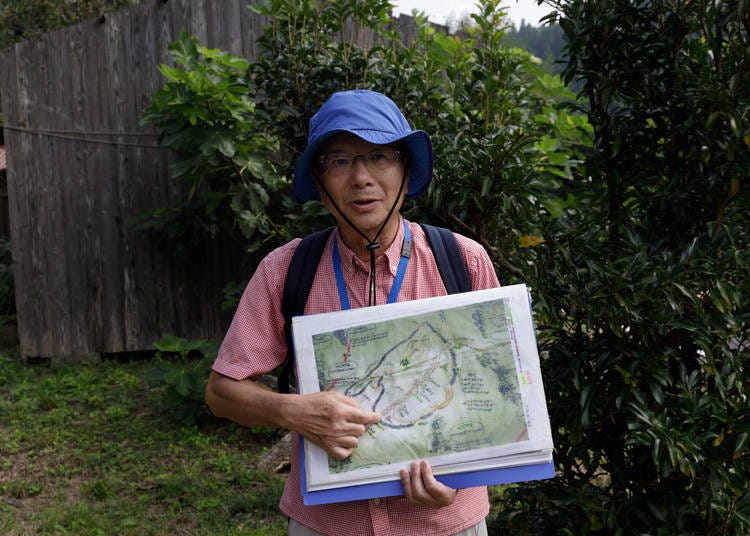
Mr. Tanimoto of the Iwami Ginzan Guide Service Organization led the tour and was joined by Shunichi Ito - an English and Japanese bilingual guide. This pairing was key to the success of the tour. Mr. Tanimoto is highly knowledgeable and passionate about the area, and Shunichi's accurate and engaging real-time interpreting enables non-Japanese speakers to enjoy the tour in the same way as local visitors. Mr. Tanimoto is a treasure trove of historical fact, and Shunichi has a deep passion for the area's nature, and these contrasting yet connecting elements made for a well-rounded tour commentary.
The legend of the discovery
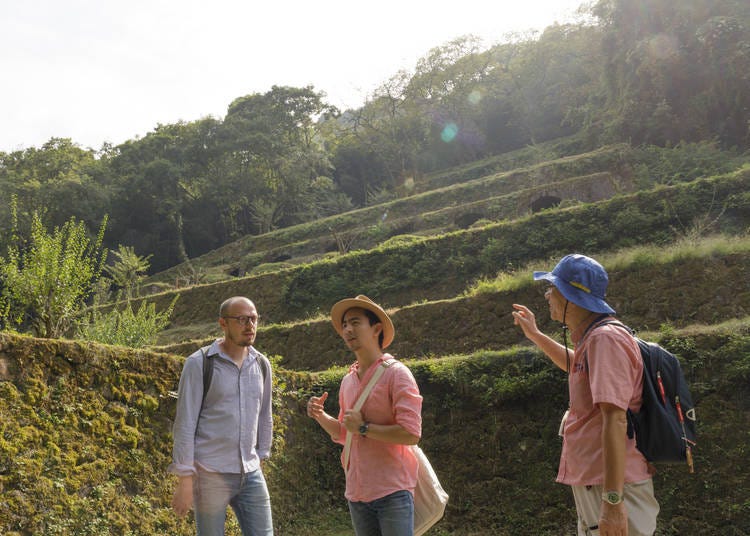
Mr. Tanimoto tells us about some of the legends that surround the initial discovery of the mine. Some suggest that a beacon of light caused by silver glinting in the sun gave the position of the mountain's treasure trove away. (However, simple science renders this idea implausible as silver turns black when it meets the air.) Some suggest that it was the mountain itself that was gleaming to draw attention to itself, whereas another (probably more viable) idea is that a shrine used to sit on the mountain top, and a religious man hiked the mountain to pay his respects to the deity and discovered the mountain's bounty. Whatever the reason, this insider knowledge adds plenty of interest and intrigue into the tour.
The course
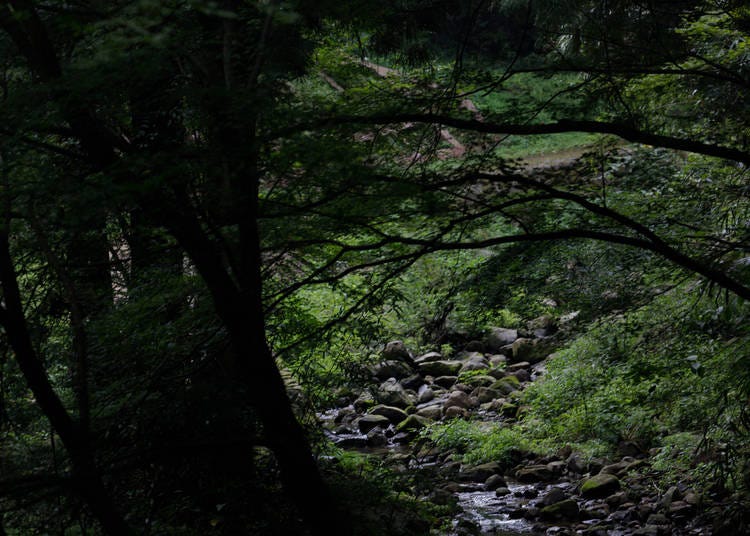
The Ginzan-Kodo course begins in the center of Omori Town before winding through the town's streets of historic buildings and up the steadily inclining track to one of the mine's main tunnels. Mr. Tanimoto's argument that understanding the background adds to the experience becomes clear very early on. He points up to the highest mountain peak and says, "There used to be a whole town up there." Looking at the verdant forest that now grows there, it's very hard to imagine. Thousands of people lived in the mountain-top town during the heyday of the silver mine, where employment was varied from mining, silver smelting, livestock handling, and many others.
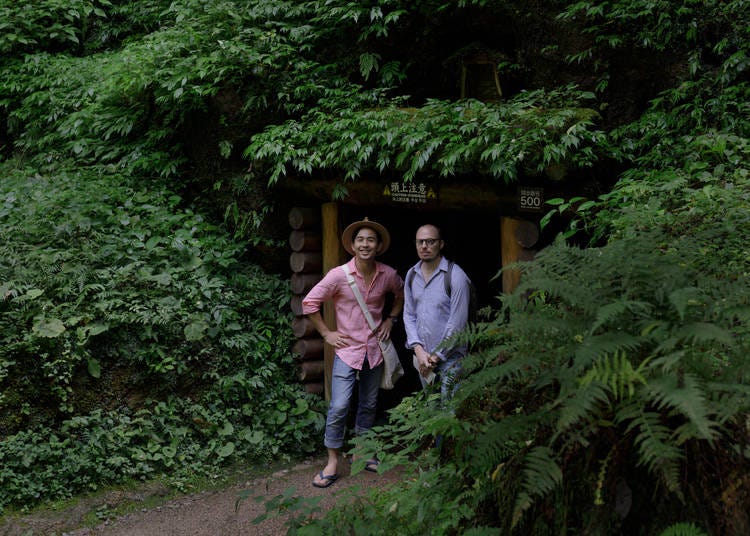
Along the path, Mr. Tanimoto explains how the area used to be divided up, with certain sections run by the shogunate - the samurai government that ruled over Japan between 1192 and 1868 - and private owners. Silver mining was a serious business, and there were heavy penalties for anyone who mined where they shouldn't. Halfway up the mountain, Mr. Tanimoto points out three holes that form a triangle mark on the side of the mountain. It would have gone entirely unnoticed if we didn't know where to look. He explains that the mark acted as a kind of family crest to show who owned the mine.
Mabu - gateways to silver
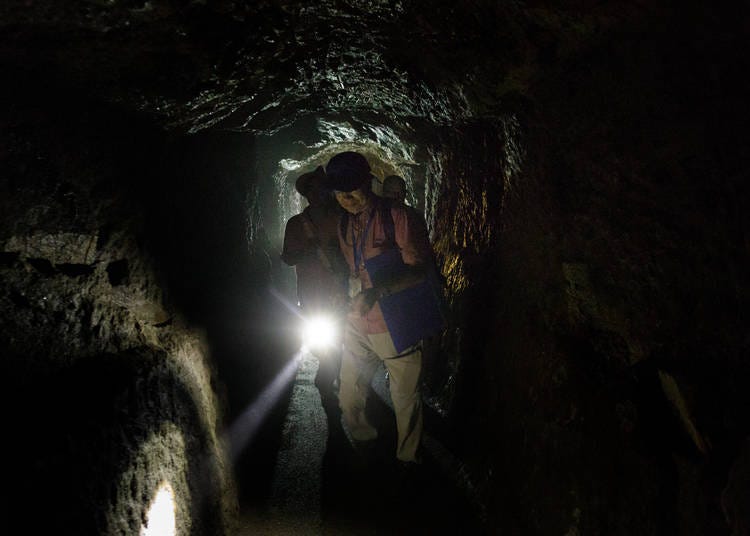
As we climbed the path deeper into the mountain, small tunnels began to appear on the side of the mountain. Mr. Tanimoto explains that these are mabu - tunnels dug to mine the silver. They are all numbered, and right now, there are over 1,000 mabu in the mountainside. As we enter the Ryugenji mabu (the only mabu that is open to the general public year-round) a rush of cold air greets us, rather like walking past a doorway of a heavily air-conditioned shop in the height of summer. Shunichi tells us how the mine stays at a constant temperature all year.
Condensation drips from the rock as we enter and head down the sloping path into the mine. The track is slippery, and the tunnel gets narrow. We walk single-file as Mr. Tanimoto highlights changes in the rock face that show how the silver was mined - some by hand, some by dynamite - and the sections where silver veins were plundered, and spots where the miners gave up hope of finding any silver. The background information that Mr. Tanimoto and Shuinichi provided us with meant we had a comprehensive understanding of silver mining history and processes by the time we re-emerged into the light around 30 minutes later.
Interaction with nature
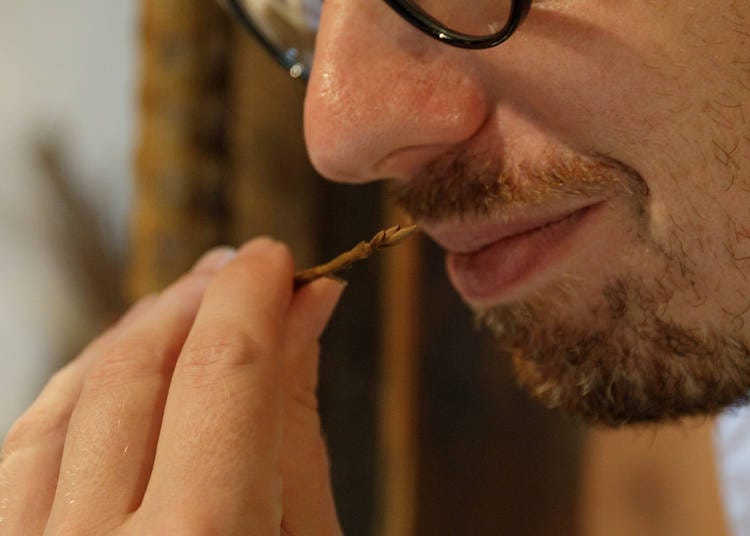
The guided tour was not merely about the history of the silver mine and the process involved in mining the heavy metal. Shunichi explained the role the natural world played to help provide some relief for the miners."There's a reason there are so many plum trees around here," he says. Plums have certain antibacterial properties, so many trees were planted, and miners would smear them on their masks for "protection" when working deep underground. Herbs and other foliage such as kuromoji (spicebush), which are also prevalent in the forest, were fanned down into the mine as their medicinal properties were thought to provide some health benefits.
-
Iwami Ginzan Guide Service石見銀山ガイドの会
- Address I824, Omori-cho, Oda City, Shimane
Program:Iwami Ginzan Guide tour "Ginzan-Kodo course"
Meeting spot:Iwami Ginzan Park
Fee:5,000 yen, Ryugenji mabu admission fee 410 yen for adults, 250yen for children (tax-included)
Fee for English guide:4,500 yen (Fee breakdown: 1,000 yen per hour X 3 hrs. & 1,500 yen transportation fee. Additional hour, 1,500 yen per hour.)
Requirements:Reservation required. Contact Guide Service Huber
Language available:English/Japanese
Email:s-ito@gungendo.co.jp
- Area
- Category
*Prices and options mentioned are subject to change.
*Unless stated otherwise, all prices include tax.
Popular Tours & Activitiess
Recommended places for you
-

The Tokyo Station Marunouchi Building
Landmarks
Tokyo Station
-

TOKYO SKYTREE®
Landmarks
Ryogoku / TOKYO SKYTREE(R)
-

Ameyoko Shopping Street
Old Towns (Shitamachi)
Ueno
-

Kappabashi Street
Old Towns (Shitamachi)
Asakusa
-

Tokyo Disney Sea®
Theme Parks
Chiba Suburbs
-

Tsukiji Outer Market
Old Towns (Shitamachi)
Tsukiji
-

This Winter, Godzilla Takes Over Haneda Airport
by: Guest Contributor
-

First Japan Cherry Blossom 2026 Forecast Announced! Here's When & Where to See Sakura in Japan
-

Jujutsu Kaisen Takes Over JR East With a Wrapped Shinkansen This Winter
by: Guest Contributor
-

Japan’s Shinkansen Is About to Change Travel in an Unexpected Way
by: Guest Contributor
-

Strawberries, Style, and Tokyo’s Coolest Neighborhood: Winter Afternoon Tea in Kichijoji
by: Guest Contributor
-

How to Get Don Quijote's Exclusive 2025-2026 Winter Gift (+Tax-Free Savings)
Inspiration for Accommodations
-

Enjoy Mt. Fuji from the Comfort of Your Room! Recommended Ryokan with Mt. Fuji View
-

Stay Near the Cherry Blossoms! Hotels for Cherry Blossom Viewing in Tokyo
-

Family-Friendly Hotels with Free Shuttle to Disneyland: Convenient Access for a Magical Stay
-

Top Ranked Hakone Hotels with Mt. Fuji View: Enjoy Stunning Scenery from Your Private Space
-

Convenient Tokyo Hotels with Airport Shuttle: Ideal for Families and Heavy Luggage
-

Stunning Tokyo Tower View Hotels: Enjoy Spectacular Scenery from Your Private Space
-

Convenient Asakusa Hotels with Kitchens: Ideal for Extended Family Visits
-

Experience Luxury: Hakone's 10 Best Five-Star Accommodations
-

Enjoy Mt. Fuji Autumn Leaves! Top Hotels Near the Popular Autumn Leaves Corridor
-

Experience Hakone Fall Foliage from Your Room with Stunning Views
-

Ueno Station Area Guide: Fun Ways to Explore Tokyo's Popular Destination (Area Map & Sightseeing Tips)
-

Exploring Tokyo Station: 11 Must-Visit Spots Around the Heart of Tokyo
-

Easy Day Trip from Tokyo! Ultimate Sightseeing Guide for Hakone & Lake Ashinoko!
-

Instagram Evergreen: Japan’s Top 10 World Heritage Sites and National Treasures!
by: Lucio Maurizi
-

Shibuya Crossing: Getting the Best View from the Deck at Magnet by Shibuya109!
-

Ultimate Tokyo Transit Guide: JR, Subways, and Private Railways Explained, Plus Suica/PASMO and Money-Saving Passes
- #best ramen tokyo
- #what to buy in ameyoko
- #what to bring to japan
- #new years in tokyo
- #best izakaya shinjuku
- #things to do tokyo
- #japanese nail trends
- #what to do in odaiba
- #onsen tattoo friendly tokyo
- #daiso
- #best sushi ginza
- #japanese convenience store snacks
- #best yakiniku shibuya
- #japanese fashion culture
- #best japanese soft drinks













